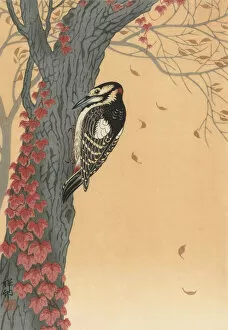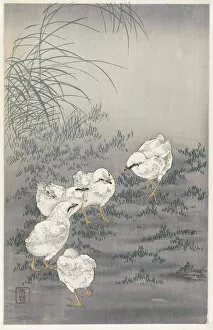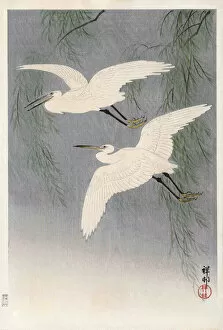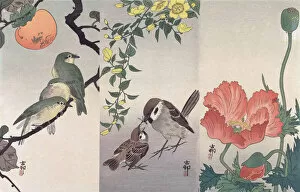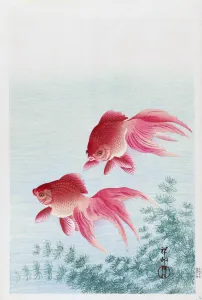Ohara Matao Collection
"Ohara Matao: A Master of Capturing Nature's Beauty" Step into the enchanting world of Ohara Matao
All Professionally Made to Order for Quick Shipping
"Ohara Matao: A Master of Capturing Nature's Beauty" Step into the enchanting world of Ohara Matao, a renowned Japanese artist whose exquisite works celebrate the wonders of nature. From delicate birds perched on branches to vibrant flowers blooming in full glory, Matao's art transports us to a realm where wildlife and plants intertwine harmoniously. In his masterpiece "Bohemian Waxwing, " Matao skillfully portrays the elegant bird with its distinctive plumage, capturing every intricate detail that makes it truly mesmerizing. The painting exudes a sense of tranquility as we witness this magnificent creature in its natural habitat. Matao's fascination with avian life continues in "Five Chicks" and "Chicken and Rooster. " These charming depictions showcase the tender bond between mother hens and their adorable offspring, reminding us of the nurturing instincts found within all living beings. Birds are not his sole focus; Matao also showcases his talent for portraying serene landscapes. In "Two Wild Ducks in the Water, " he captures the serenity of a tranquil pond adorned by graceful waterfowl gliding effortlessly across its surface. Similarly, "Two Peacocks on a Tree Branch" presents these majestic creatures amidst lush foliage, their iridescent feathers shimmering under dappled sunlight. Moving beyond feathered friends, Matao explores other facets of nature through pieces like "Egret" and "Kingfisher and Irises. " These artworks highlight his ability to blend flora seamlessly with fauna – showcasing how they coexist symbiotically within our ecosystem. Matao's attention to detail is evident once again in paintings such as "Great Tit on Paulownia Branch" and "Kingfisher Hunting For Fish. " Each brushstroke brings forth an incredible level of realism that allows us to appreciate even the tiniest nuances present in these captivating scenes. Finally, we encounter glimpses into the human connection with nature in "Four Fishing Boats.

